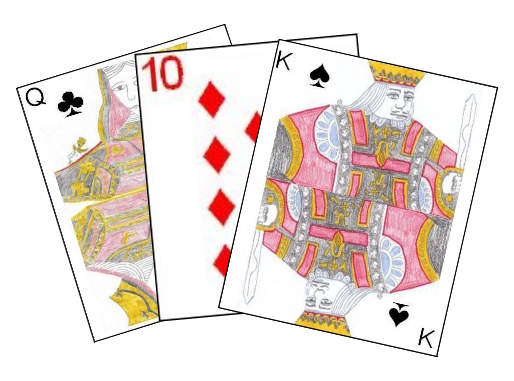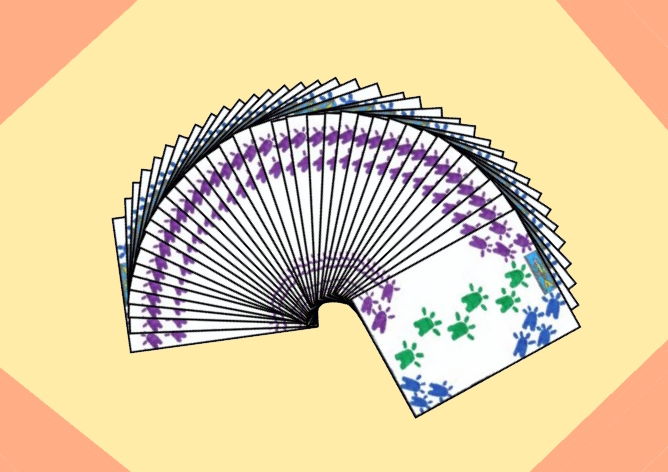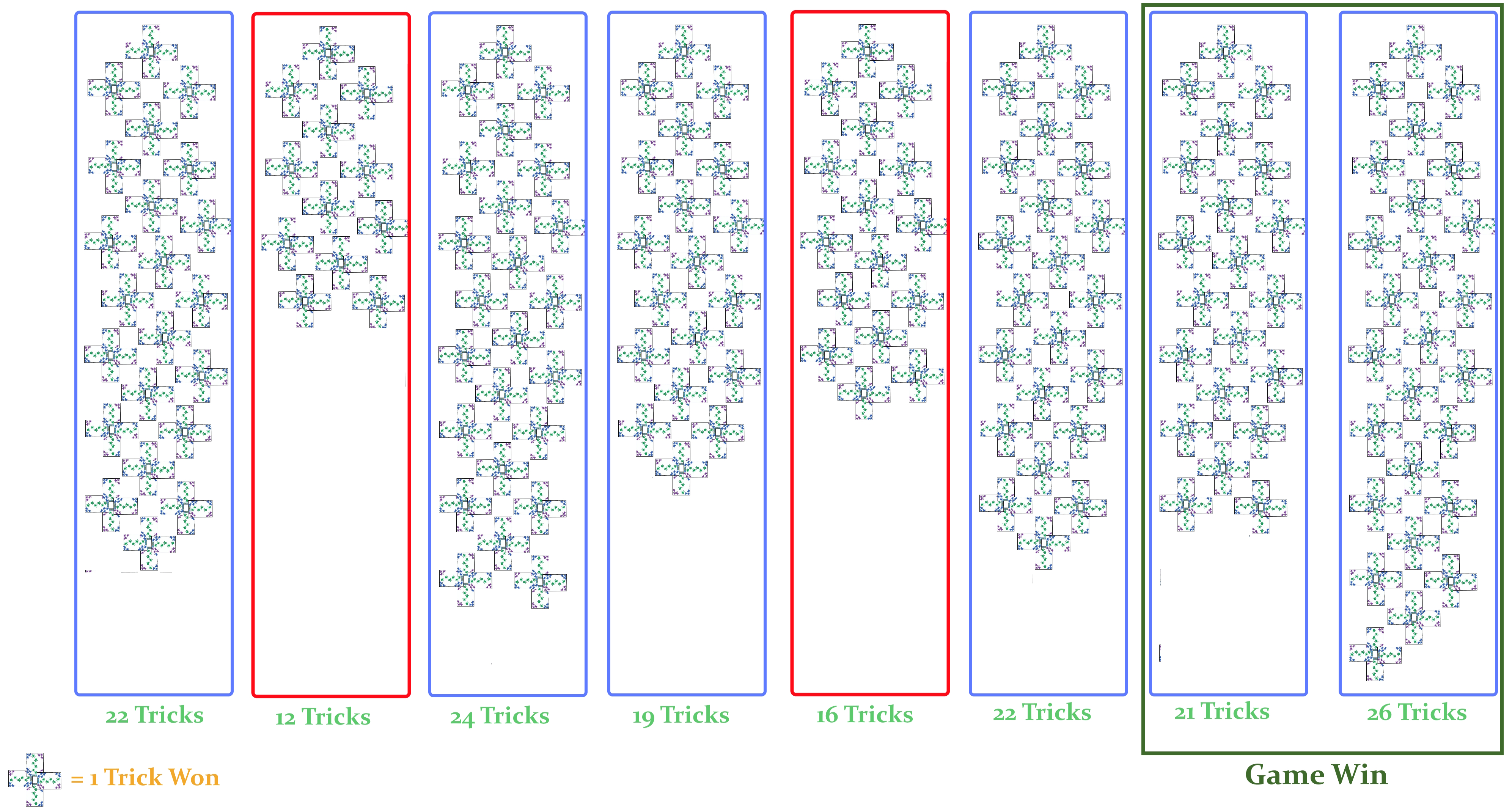Turup: Turup (or Turub) is a game played similarly to Aarb'a Turub. This variant of the game is briefly described in the 1912 publication
British Somaliland authored by Ralph Evelyn Drake-Brockman.
Similarly to Arba'a Turub, the game is played by four players in two partnerships of two players each. However, in this game the deck consists of 36
total cards, which can be formed using one standard 52 card deck and removing all cards of denomination 5 and lower. The ranking of the cards in the deck are the same as in Arba'a Turub; Ace, King, Queen, Jack, 10, 9, 8, 7, 6.
 |
| The player to the immediate right of the dealer determines the trump suit based on only the first three cards he receives. |
After partnerships have been determined (using any standard method) and the first dealer has been determined, the dealer begins dealing the cards. As with Arba'a Turub, he deals the cards in packets of three face-down cards. However, in Turup, he deals the cards in a counter-clockwise direction around the table. After the first player, at his right, has his first packet of three cards, he temporarily stalls the deal. The player receiving these first three cards then examines his hand and announces a trump suit based on these first three cards. After this player announces one of the four suits as trump for the hand, the dealer continues dealing the cards, until each player has a total of nine cards.
The player to the immediate right of the dealer leads the first card to the first trick, and each other player plays one card to that same trick. The leader to a trick can play any card of choice to start the trick. Each other player, in turn, must then play a card of the suit originally led to the trick if they have a card of that suit. If they have no such card, they may play any card still remaining in their hand, including a card from the trump suit. After each of the four players has played one card to the trick it is determined who has won the trick.
The player of the highest card in the trump suit wins the trick. If the trick contains from the trump suit, the trick is won by the player of the highest card of the suit originally led to that trick. The winner of each trick leads the first card to the next trick.
The goal of each team is to win five of the nine tricks. As soon as one partnership has managed to win five such tricks the hand ends with that
partnership winning the hand and earning one
Game point. However, if one partnership manages to win the first five tricks, the player winning that fifth trick for his partnership may (but is not obligated to) so ask his partner how many additional tricks his partner believes he can win if the hand were to continue. If the player asking believes that amongst him and his partner, based on his partner's answer, he can win the remaining four tricks, he may elect to continue the hand, and thus he leads the next card to start the next trick. If that team does manage to win all nine tricks (called a kort), that team wins the hand and earns three Game points for the
maneuver. However, if they fail to win
all four of the last remaining four tricks, the opponents win the hand, earning the three Game Points instead.
The game is usually played to a certain score, with the team first reaching that score over the course of several hands declared the winner.
Copyright © 2015 CatsAtCards.com. All rights reserved.


 After all 36 tricks have been played and won, each partnership combines all the tricks they have won to determine how many total tricks that partnership have won during the hand. The partnership to have won the most total tricks is declared the winner of that hand. If both partnerships capture the same total number of tricks
(18), the hand is a tie, with no winner.
After all 36 tricks have been played and won, each partnership combines all the tricks they have won to determine how many total tricks that partnership have won during the hand. The partnership to have won the most total tricks is declared the winner of that hand. If both partnerships capture the same total number of tricks
(18), the hand is a tie, with no winner.
